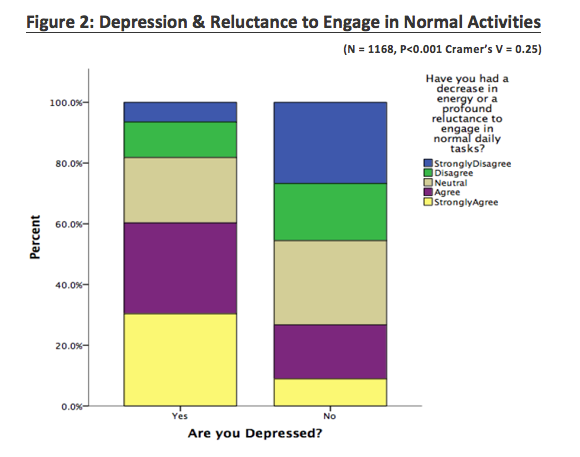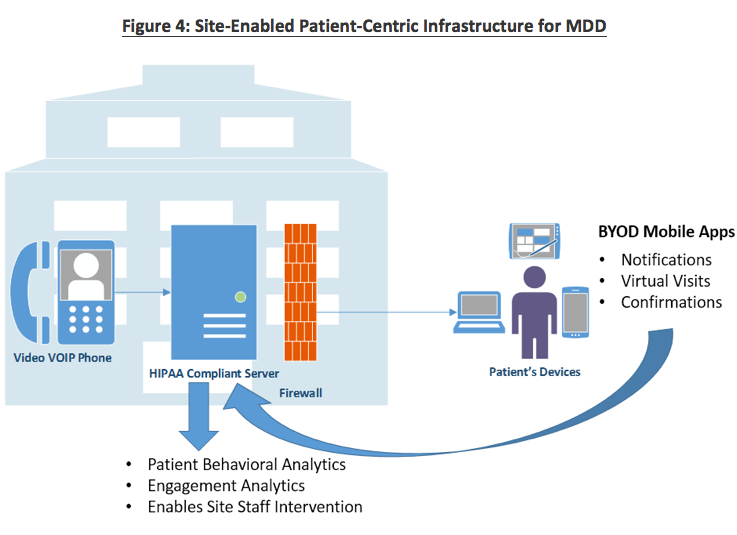Leverage Site-Owned Tech to Improve Trial Retention
Major Depressive Disorder patients display a reduced ability to feel pleasant experiences known as Anhedonia. Such a feature provides difficulties when treating depression and engaging patients during clinical trials.
Anhedonia (or reduced ability to feel pleasure) is considered one of the core features of Major Depressive Disorder (MDD) and is a strong predictor of poor therapeutic outcomes.1 Anhedonia is characterized by a reduction in pleasure and interest in most daily activities; specifically, depression is better characterized by a reduction in pleasant experiences compared to an increase in negative feelings.2 This reduction in pleasure, which also involves motivational factors,3 has serious consequences for the treatment of depression, and patient engagement in clinical trials. To elaborate, anhedonia is associated with a high chance of patient drop out, and non-adherence to both pharmacotherapy and psychotherapy.4
Many clinical trial patient-centric technologies focus on mandating patients to adhere to study procedures and medication, however, MDD patients are different; they are at a higher risk of deviating from study procedures and need investigator support and therapy. Given the nature of MDD patients, and the requirements of MDD trials, patient-centric technologies should focus on enhancing patient and investigator communications.
In this article, we will analyze data from numerous sources to better understand depressed patient behavior, and explore how study site-enabled patient-centric platforms can improve depressed patient behavioral outcomes in clinical trials. The data in this analysis was obtained from Hapworth Psychiatric Medical Center, which conducted an outcomes research assessment through validated and licensed measures including Beck Scales, mood measurement, drug side effect reporting, and socioeconomic behaviors for a variety of psychiatric indications. Over the course of five years, Hapworth Psychiatric Medical Center collected data from nearly 2,000 patients in New York City.
Characteristics that Impact in Clinical Trials
Real world data confirms the aforementioned characteristics associated with depressed patients. Figure 1 demonstrates that depressed patients are more likely to experience anhedonia, and Figure 2 shows that depressed patients are also more likely to disengage from normal daily activities than those who are not depressed.


In clinical trials, these behavioral associations can manifest into other trial-related risks, such as study dropout and investigational product non-adherence; Figure 3 illustrates that depressed patients are associated with high clinical trial medication non-adherence rates compared to other disease indications.5

While it is well known that MDD trial failure rates are high due to disease-related factors (i.e., subjective nature of measuring depression), and drug trial-design related factors,6 and although intent-to-treat sensitivity analyses exist for dealing with non-adherence related patient data,7 addressing non-adherence directly with patients can enhance clinical trial outcomes and data quality through better compliance and retention.
Tech to Enhance Interactions
MDD trials are unique in that protocols demand regular patient-investigator interventions, such as consistent follow up visits, and in-person evaluations requiring the expertise of the investigator. Additionally, MDD treatment involves not only medication, but also psychotherapy. Since such interventions require regular interactions between investigators and patients, patient-centric technology use in MDD trials should focus on enhancing communications between the investigator and the patient. Study site-enabled technologies can facilitate these interactions and interventions (Figure 4).

Site-owned IT infrastructures and technologies allow investigators to develop simple mobile applications (implemented via BYOD) to remotely conduct patient visits and engage patients. Furthermore, such infrastructures allow the study site to collect behavioral and engagement analytics to identify MDD patients posing study risks (i.e., lack of engagement, risk of attrition, etc.), and enables site staff to intervene with high risk patients, reducing dropout (more trial data), acting on non-adherence (better compliance), and bringing the trial to the patient (patient centricity).
Can Sponsors Implement This?
Sponsors can certainly develop this type of technology and implement it study wide. However, it is important for sponsors to consider how such technologies will fit into study site infrastructures, and which clinical IT systems the technology will need to integrate into (i.e., CTMS in case of site-staff change), which can be costly and inefficient. Another hurdle involves protecting patient privacy, and supplying patients with the option to use a study-given device, in case the patient has older OS versioning on their mobile devices, or if the patient preferred using a study-given device. Leveraging a site-owned IT infrastructure has its benefits, as deploying such infrastructures address privacy concerns, and updates are made by site staff in case of staff turnover, preventing operational delays and discrepancies.
Summary
MDD trials exhibit inherent risks that increase study failure rates, and MDD patients catalyze this outcome by introducing medication and protocol non-adherence, as well as attrition. Leveraging patient centric technologies at study sites (particularly site-owned IT infrastructures) to engage MDD patients allows site staff to efficiently bring trials to patients via mobile applications, and efficiently improve adherence via early intervention.
References
[1] Uher, R., Farmer, A., Maier, W., Rietschel, M., Hauser, J., Marusic, A., ... & Henigsberg, N. (2008). Measuring depression: comparison and integraton of three scales in the GENDEP study.
Psychological medicine, 38(2), 289-300.
[2] Peeters, F., Nicolson, N. A., Berkhof, J., Delespaul, P., & deVries, M. (2003). Efects of daily events on mood states in major depressive disorder. Journal of abnormal psychology, 112(2), 203-211.
[3] Rizvi, S. J., Pizzagalli, D. A., Sproule, B. A., & Kennedy, S. H. (2016). Assessing anhedonia in
depression: Potentials and pitfalls. Neuroscience & Biobehavioral Reviews, 65, 21-35.
[4] Arnow, B. A., Blasey, C., Manber, R., Constantno, M. J., Markowitz, J. C., Klein, D. N., ... & Rush, A. J. (2007). Dropouts versus completers among chronically depressed outpatients. Journal of affective disorders, 97(1), 197-202.
[5] Adherence to medications: insights arising from studies on the unreliable link between prescribed and actual drug dosing histories. Blaschke TF1, Osterberg L, Vrijens B, Urquhart J., Annu Rev Pharmacol Toxicol. 2012
[6] https://openaccess.leidenuniv.nl/bitstream/handle/1887/13091/Chapter%2011.pdf?sequence=17
[7] http://www.ncbi.nlm.nih.gov/pmc/articles/PMC2921714/
Moe Alsumidaie, MBA, MSF is Chief Data Scientist at Annex Clinical, and Editorial Advisory Board member for and regular contributor to Applied Clinical Trials.
Michele Garibbo is a Data Analyst with Annex Clinical
How Digital Technology and Remote Assessment Strategies Can Aid Clinical Trial Research
July 24th 2020While there's been hopeful news on treatments and vaccines, sponsors should plan to discuss necessary strategies and contingencies at the outset of new studies or re-opening of halted studies during the COVID-19 pandemic.